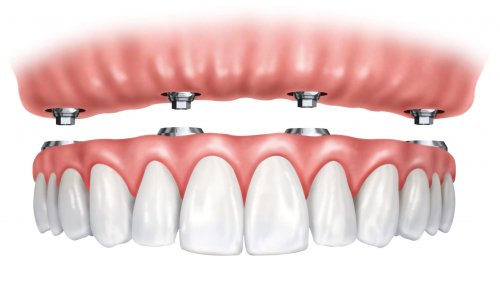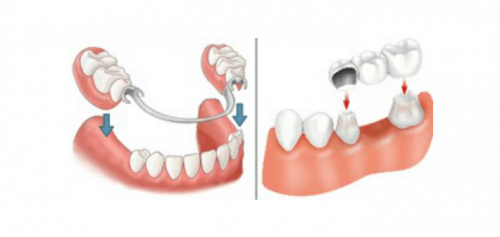Dentures and Partials
Dentures are removable appliances that replace missing teeth to help restore your smile. Teeth are often lost through gum disease, tooth decay or injury. Dentures give you the ability to eat and speak again. Also, when teeth are lost, facial muscles lose their structure. Proper dentures can restore the appearance of the face and profile.



Types of Dentures
- Implant Supported Dentures. Implant Dentures consist of traditional dentures attached to titanium implants, so they are secured directly to the jawbone. They are a good solution for those who have lost all of their teeth but still have enough remaining jawbone to support the titanium implants. They are particularly helpful on the lower jaw, where traditional dentures are far less stable and can become uncomfortable and even painful over time.
- Partial Dentures and Bridges. A partial denture consists of replacing teeth that are attached to a base. Partial dentures are used when you still have one or more natural teeth or Implants in the upper or lower jaw. A fixed bridge replaces one or more teeth by placing crowns on the teeth on either side of the space and attaching artificial teeth to them. This “bridge” is then cemented into place. The partial denture fills in the spaces created by missing teeth and keeps remaining teeth in their correct alignment.
- Complete Dentures. These can be either conventional or immediate. Complete dentures are placed in your mouth after the teeth have been removed and the gum tissue has healed. Conventional dentures are placed 8 to twelve weeks after the teeth have been removed. Immediate dentures are inserted on the same day that the teeth are removed. In this case, you don’t need to go without teeth during the healing period, but the immediate dentures may need to be adjusted after your jaw has healed.
If you are missing teeth, make an appointment today to discuss your options for restoring your smile.
